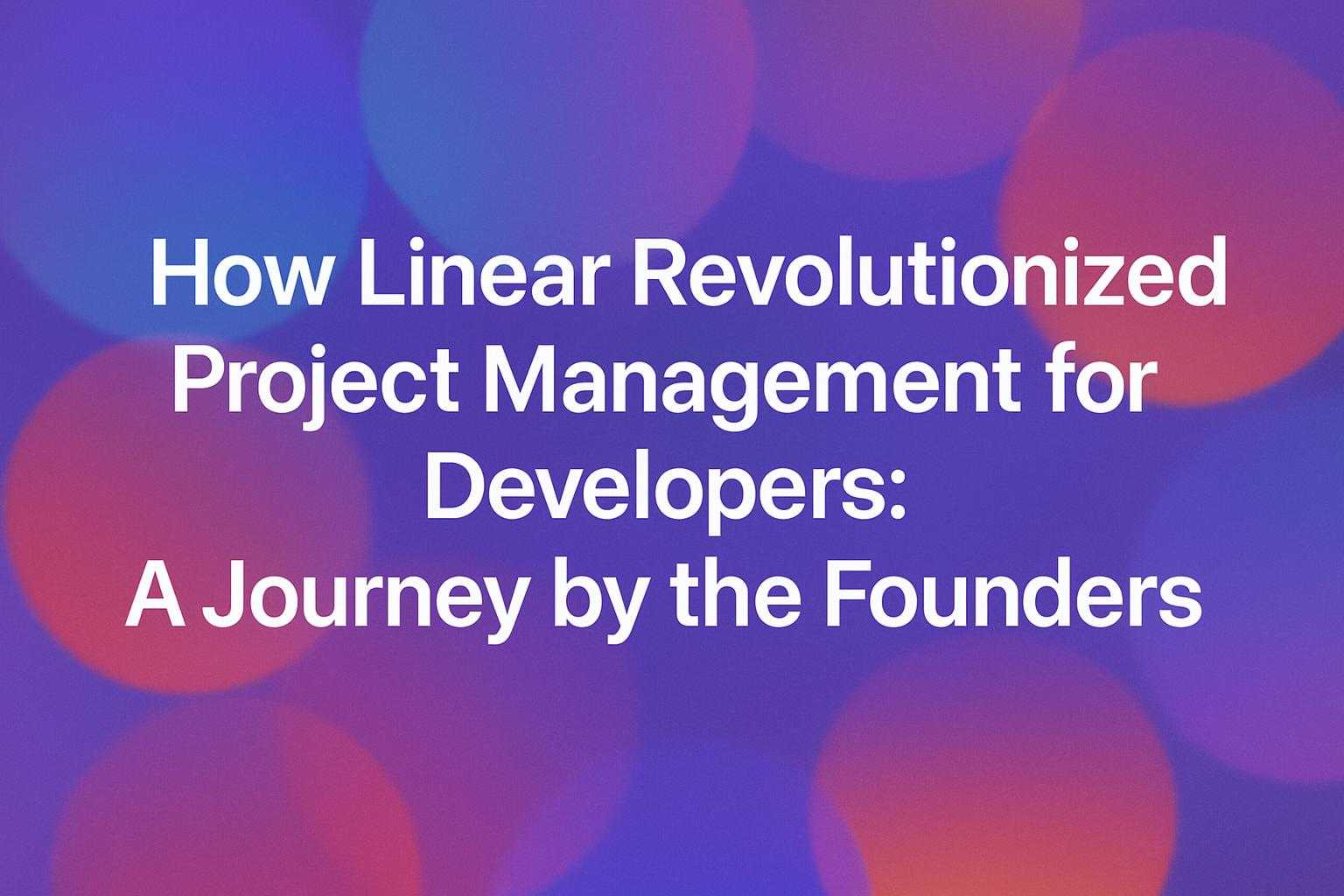How Linear Revolutionized Project Management for Developers: A Journey by the Founders

Company profile
Company business details
Motivation to build the product
The founders were motivated by the common dissatisfaction with existing project management tools, which often do not cater to the needs of individual contributors. They aimed to create a solution that enhances the workflow of product teams and improves collaboration among developers.Problem that their product solves
Linear solves the problem of inefficient project management for software teams, particularly individual contributors who often find existing tools cumbersome. By providing a user-friendly and efficient platform, it allows teams to focus on building and shipping products effectively, which is crucial for their success.Their unfair advantage
Linear's unfair advantage lies in its unique synchronization architecture that allows for real-time updates and a seamless user experience, specifically designed for the needs of developers rather than project managers.Strategies
Pre-Launch (Product Development & MVP)
High-Quality Design Focus
Ki Sarin emphasized the importance of high-quality design from the very beginning of Linear. He believed that in today's competitive landscape, a product must have a strong design to capture attention and be taken seriously. This approach was evident in the early stages of Linear, where the team prioritized crafting a visually appealing and user-friendly interface, ensuring that even the initial iterations of the product met high design standards. This focus on design was not just about aesthetics but also about creating a seamless user experience that would differentiate Linear from other issue tracking tools.
Cohort-Based Beta Testing
During the private beta phase, Linear implemented a cohort-based approach to testing. Instead of inviting all users from the waitlist at once, they selected small groups based on survey responses about their needs and existing tools. This method allowed the team to gather targeted feedback, address specific issues, and refine the product iteratively. By inviting users in batches, they minimized the risk of overwhelming the system with feedback on the same problems, leading to a more effective development process.
Targeting Under-served Market
The founders of Linear identified a gap in the project management tool market, particularly for individual contributors (ICs) who felt under-served by existing tools. They realized that most project management software was designed with product managers and middle management in mind, leaving ICs with tools they did not enjoy using. By focusing on creating a tool that catered specifically to the needs of ICs, they aimed to build a product that would resonate with this audience. This insight led them to develop an issue tracker that would be user-friendly and efficient for engineers, which they believed would quickly attract customers from smaller startups.
Emphasizing User Experience and Design
From the outset, the founders of Linear prioritized creating a product that was not only functional but also aesthetically pleasing and enjoyable to use. They drew inspiration from their experiences at companies like Uber, Airbnb, and Coinbase, where they observed a lack of focus on user experience in project management tools. They aimed to differentiate Linear by ensuring that every interaction within the app was smooth and intuitive. This commitment to quality and design was evident in their early prototypes, where they focused on building a command menu that felt like a native application, setting a high standard for user experience.
Active YC Companies Offer
To support early-stage startups, Linear offered a year of free access to their product for active Y Combinator companies. This strategy was aimed at building a user base and gaining valuable feedback from startups that were already in the growth phase. By providing this offer, Linear not only attracted potential users but also positioned itself as a supportive tool for founders, creating a community around their product.
Learn more about Linear

Inside Linear: Building with taste, craft, and focus | Karri Saarinen (co-founder, designer, CEO)

An Interview with Tuomas Artman of Linear

Building at the early stage



